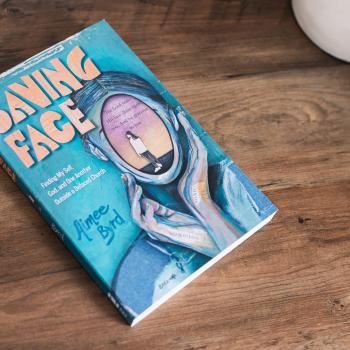 Today we welcome David Nanninga to the Anxious Bench. David is a first year Masters student in the Baylor History department. He is interested in post-WWII political history, specifically 1970s politics and the Carter administrations relationship to white evangelicals. I had the privilege of teaching David in my Women’s History and Theory Seminar in Fall 2021, and he wrote this blog post as one of our seminar assignments.
Today we welcome David Nanninga to the Anxious Bench. David is a first year Masters student in the Baylor History department. He is interested in post-WWII political history, specifically 1970s politics and the Carter administrations relationship to white evangelicals. I had the privilege of teaching David in my Women’s History and Theory Seminar in Fall 2021, and he wrote this blog post as one of our seminar assignments.
Sacagawea is the face of the $1-dollar coin. She is the only woman on the face of any U.S. Currency. In 2016, The Secretary of the Treasury announced plans to move Harriet Tubman to the face of the $20-dollar bill, which would make her the first African American woman to be on currency. However, the plan was discontinued under the Trump administration and, although it has been restored under the Biden administration, it will likely be years before such a change is made. The lack of representation on currency may not seem of great significance, but it speaks to a broader issue that we find in both historiography and the public perception of U.S. history: white men dominate positions of importance and power.
Historians like Bettye Collier-Thomas seek to change this perception by restoring African American women to their place in the historical narrative.
Bettye-Collier Thomas was born to middle-class parents in 1941 in segregated Georgia—although she didn’t grow up there. She moved with her family to Florida and later to New York, where she graduated from high school in Jamaica, a majority-minority borough of Queens. From there she began a career in which she would become a pioneer for African American women in academia. She was the first African American woman to receive a PhD from George Washington University. Shortly thereafter, while she was working as a special consultant for the National Endowment for the Humanities, she established the first archive devoted directly to African American women’s history.
“She seems to think Black history is American history.” In a 2020 interview, Dr. Thomas described how a white, male peer evaluated her teaching early in her career. She was “needing improvement,” he wrote, because she seemed to think “Black history is American history.” This mindset has become foundational to Collier-Thomas’ work, as she has focused on restoring African American women in areas that they had previously been silenced—such as her 2010 Jesus, Jobs, and Justice: African American Women and Religion and her 1997 book Daughters of Thunder: Black Women Preachers and Their Sermons.
Daughters of Thunder emerged out of a conversation that left Thomas frustrated. A colleague remarked to her that there were no records/very few records of the sermons of black women preachers. Doubting that was the case, Collier-Thomas set out to search for these women herself. And she did. She found dozens of sermons of black women preachers, including sermons of well-known figures like Sojourner Truth, but also lesser-known but no-less-significant sermonizers such as Jarena Lee, or Ida B. Robinson (a significant figure in the late 19th/early 20th century Holiness/Pentecostal movement). Robinson founded the Mount Sinai Holy Church of America, which had consistent female leadership from the 1920s through the 2001. Collier-Thomas compiled 38 sermons of 14 Black women preachers, as well as other biographical information, into a single-300-page dense volume.
In other words, she answered the question, “Where are the black women preachers?” Here they are, she said, and dropped Daughters of Thunder into the field of American history. It was, to use an esoteric term, a baller move, as she exposed the white-centered bias of American religious history. As she said in a Religion News Service interview, “I’m struck by all the people who tell me their grandmother was a preacher. Of course, their stories have been suppressed in the official church histories.”
Black women preachers were always there–someone just had to look for them.
Collier-Thomas’s focus on religion in the lives of Black women did not end with her publication of Daughters of Thunder. In her 2010 book Jesus, Jobs, and Justice: African-American Women and Religion, she dives into the central role that the church has played in the lives of Black women, particularly in the early 20th century. One might expect a book of this subject to either be a hagiography of the church or a “burn it all down” condemnation of the church, but Collier-Thomas avoids both traps by introducing nuance into the narrative. She rightly identifies that the church as both been a source of community and comfort as well as oppression and subjugation, particularly when it comes to the persistence of both racism and patriarchy in the church. She recognizes some of the more well-known figures in this era such as Ida B. Wells, the famous journalist who investigated the pervasiveness of lynching and racial terror in the turn-of-the-century South.
But the most remarkable part of the book is her resurrection of institutions that were created and run by African-American women, such as the Sisters of the Holy Family, a Catholic order started by Black women in New Orleans in 1837. This order served their community, including establishing the oldest Catholic nursing home in the United States and founding a school for Black girls in 1850 in New Orleans, thus providing a home for orphans and teaching enslaved people when their education was illegal in Louisiana. The Sisters of the Holy Family thus became a haven for vulnerable people of color. Rooted in the Catholic faith, it provided care and resources to the community, doing work very similar to that of Jane Addams in Hull House in Chicago in the decades later.
Yet, despite the similarity of their work, it isn’t the Sisters of the Holy Family who are usually remembered and taught in American history survey courses. It is Jane Addams and Hull House.
Which is why the work of scholars like Bettye-Collier Thomas is so important.
Black women’s history is American history, and giving proper recognition has to be more than just putting Harriet Tubman on the $20 bill. It is only through the full restoration of the lost and overlooked stories that the historical record can be fully written. Afterall, like Bettye Collier-Thomas found with Black women preachers: Black women have always been part of the historical narrative—someone just has to include them.













